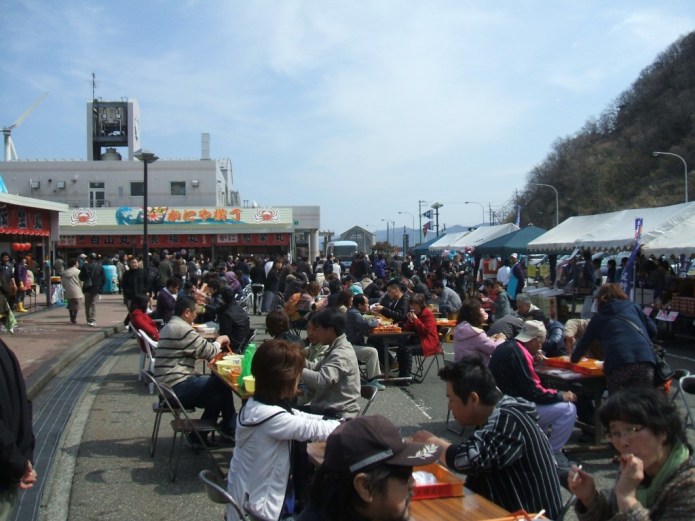Good afternoon from the Itoigawa Global Geopark! Today is the day of the Itoigawa Kenka Matsuri. The weather is not the best festival weather, but there was still a huge turnout and the festival was definitely a success! Unfortunately, I was unable to attend personally, so instead I want to share something else with you today:
 This plant is called mizubashou or ‘water banana’ in Japanese, a name derived from the shape of its leaves. In English, it is known by the name Asian skunk cabbage. They are related to the skunk cabbage found in Western North America, but unlike their pungent American cousins, they have no noticeable smell. They are also not particularly cabbagey either.
This plant is called mizubashou or ‘water banana’ in Japanese, a name derived from the shape of its leaves. In English, it is known by the name Asian skunk cabbage. They are related to the skunk cabbage found in Western North America, but unlike their pungent American cousins, they have no noticeable smell. They are also not particularly cabbagey either.
These plants grow in marshes and wetlands throughout Japan and the Russian Far East. Generally speaking, these plants only grow in alpine and subalpine zones, but here they grow at an unusually low elevation of only 5m. Only about 1km from the coast, it is not only the lowest-growing colony of Asian skunk cabbage in Japan, it is also the closest to the sea.
Because of this, they are very easily viewed when they blossom in late March and early April. I rode a bicycle from central Itoigawa and was there in about 20 minutes!
 While mizubashou may not be as famous as Japan’s many cherry blossoms, they are a much-loved spring flower here in Itoigawa. Their simple beauty and rarity in the wild makes them a treasure to flower enthusiasts across the country.
While mizubashou may not be as famous as Japan’s many cherry blossoms, they are a much-loved spring flower here in Itoigawa. Their simple beauty and rarity in the wild makes them a treasure to flower enthusiasts across the country.
–Ishikoro






























